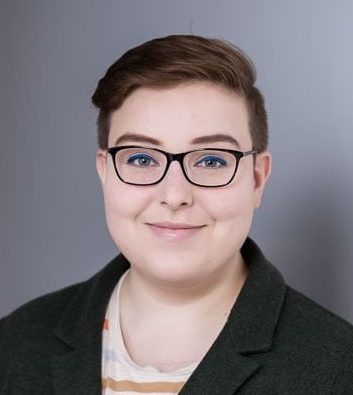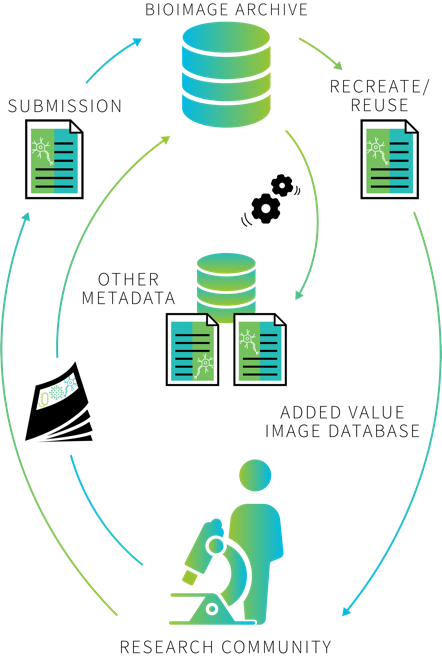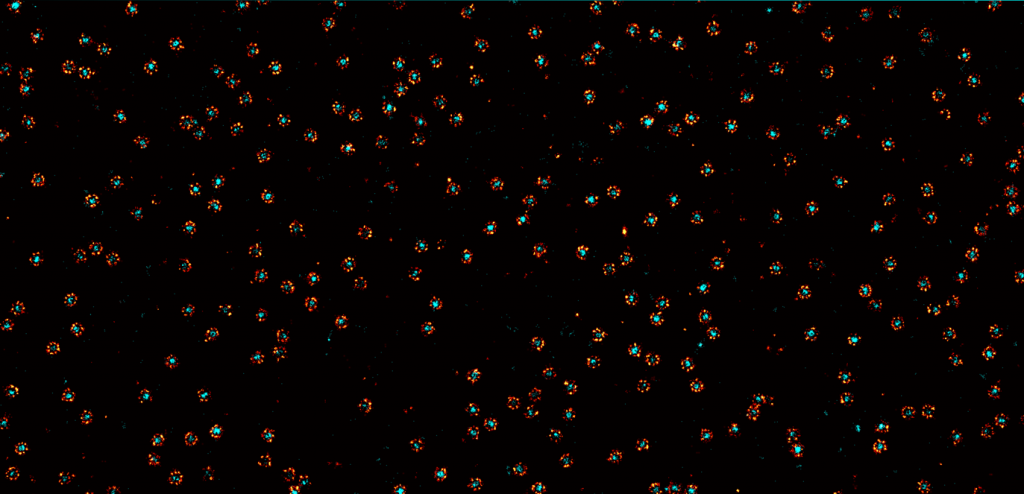‘Open access to imaging technologies’ – an interview with Euro-BioImaging
Posted by FocalPlane, on 6 August 2021

If you read the blog series ‘Technology Highlights by Euro-BioImaging’, you probably already know Johanna Bischof. She is the Scientific Project Manager at Euro-BioImaging and the person behind the blog series. Her interesting interviews have allowed us to learn more about the Euro-BioImaging nodes and different microscopy techniques such as Coherent Anti-Stokes Raman Spectroscopy and Fluorescence Lifetime Imaging. Here, we talk with Johanna to learn about Euro-BioImaging, their goals, services, and much more.
The FocalPlane community probably have heard about Euro-BioImaging from the blog series you have on our site, but can you tell us a bit more about Euro-bioimaging and its mission?
Euro-BioImaging is a publicly funded, non-profit research infrastructure. Our mission is to provide open access to imaging technologies, advanced training and image data services to all researchers, regardless of research interest or affiliation, in both academia and industry. To do so, we bring together 137 of the most prestigious imaging facilities from our member states and EMBL, which make their services, technologies and expertise available to our users. This makes us Europe’s landmark research infrastructure for biological and biomedical imaging services.
Through the blog series ‘Technology Highlights’ we’ve been learning a bit more about all the imaging technologies offered by the Nodes. What other technologies can researchers find in these Nodes that we haven’t heard of in FocalPlane yet?
So many more! Our Nodes offer around 50 different imaging technologies, both for biological and biomedical imaging. To give you a brief overview of the range of our services, we of course provide access to all the different light microscopy techniques, ranging from super-resolution microscopy to functional imaging and lightsheet systems. We even have underwater microscopes. On the electron microscopy front, we also have many Nodes that offer their services, including correlative light and electron microscopy, cryo-EM and FIB-SEM. Our medical imaging service catalog includes preclinical and clinical imaging technologies, such as MRI, PET and CTs. You can find the full list on our website.
And our technology portfolio is constantly growing because we always want to offer our users access to the latest technologies. In the autumn, we will bring a number of exciting new technologies on board, and we will be telling you about those also here on FocalPlane. So continue following our Technology Highlights series!
Data storage and management is becoming a big issue in imaging, especially with novel technologies that can generate several GBs of data in just one experiment. Do you also offer data management services?

Data management is certainly one of the big and unifying challenges of modern imaging technology. Therefore, we at Euro-BioImaging support our users and Nodes with image data services. Specifically, we work with the BioImage Archive, hosted by EMBL-EBI, which provides image archiving services for the whole bioimaging community. This provides a solution for all researchers who want to make the images associated with their publications publicly available.
Through projects such as EOSC-Life, we also work with the wider imaging community in the development and popularization of open science and cloud computing tools for image analysis, such as Galaxy Imaging.
Who can access these services? Is it limited to scientists in European countries?
The services offered by our Nodes are open to all scientists, not just to scientists from Europe or from our member countries. We’ve had users from all around the world, including from the USA and Japan.
Potential users can visit the Euro-BioImaging web portal to select a technology and a Node, or contact Euro-BioImaging directly to discuss their project and receive advice on technology and Node selection.
Is there a periodic call for proposals?
No, user access is granted on a rolling basis.
What about the costs? Are there also funding opportunities?
The costs for scientists to access Euro-BioImaging services are kept to their minimum, with the sole aim to allow running the imaging facilities. Access costs really depend on the selected technology, project duration and the Node. Many funding opportunities exist – including The Company of Biologists’ Travelling Fellowship – to cover travel costs, access fees and/or consumables. We keep an up-to-date list on our website, “Funding user access”. We are also happy to advise potential users on the best funding option for them – you can contact us at info@eurobioimaging.eu.
Which are the technologies with more demand?
The Euro-BioImaging user projects cover a really broad range of topics and use many different techniques. On the light microscopy side, super-resolution methods, particularly single-molecule localization methods such as PALM and STORM, are especially popular. Electron microscopy solutions are also really widely requested by our users.
We also see quite a bit of user interest in microscope systems that may be fairly straight-forward and widely available, but where one of our Nodes offers an adaptation that is particularly useful for certain research areas. One such example are confocal systems that are turned on their sides to allow imaging of plant growth in the correct gravitational direction. That is of course not something that every facility that has a confocal microscope can offer because of the time and effort of setting it up, so users will come to our specialized Nodes for that. The same goes for underwater microscopes.

In June, eight new Nodes joined Euro-BioImaging. For institutions and facilities that might be interested in being part of this community, how can they join?
Euro-BioImaging runs regular Call for Nodes, where new facilities can apply to become a Node in Euro-BioImaging. To become a Node, the institution or facility has to be located in one of our member states. If you are interested, please contact us at info@eurobioimaging.eu and we will be happy to provide more information and also connect you with your national imaging community or existing Nodes which you may be able to join.
You just published your first annual report; what is the assessment of this first year and the conclusions of the report?
Our Annual Report tells the story of the Euro-BioImaging community in our first year of operations as an ERIC. It provides a sense for the amazing progress that was made within our community – despite the global pandemic. To get to know us better, meet our Nodes, learn about our science and our activities, we really encourage you to read it!

With the current pandemic, travel has been very limited and this probably has affected the access to the Nodes. How did you overcome this limitation?
Before the pandemic, a few of our Nodes already offered remote access services, but most user projects involved users travelling to the Node and using the facilities and instruments there. This, of course, became impossible for large parts of the last year. But our Nodes showed remarkable resilience and adapted their service offer. Now almost all Nodes provide some level of remote access services, where users can for example send their samples to the Node via mail and then control the microscope remotely to acquire their data. Here’s an example story to read of remote access to STED microscopy from our EMBL Node.
Any exciting new projects for Euro-BioImaging’s second year that you could share with us?
We are really excited about the second Euro-BioImaging User Forum, an online event that takes place on October 14th. After the success of the first User Forum in June, we decided to organize another series of talks on the same topic, “Understanding and Fighting Cancer”. This event will reveal how imaging technologies support cancer research and highlight the close collaboration between scientists and experts at the Euro-BioImaging Nodes is leading to scientific outcomes that have a positive impact on human health.
We are also really excited to be part of a newly funded Horizon Europe project called ISIDORe. This project will provide funding for access to research infrastructure services for scientists working on infectious diseases, including imaging services from Euro-BioImaging Nodes. We look forward to working with our partners and Nodes to support research projects that shed light on viruses, in particular SARS-COV-2 variants.

And of course, we encourage all imaging enthusiasts to join us for the Virtual Pub every Friday afternoon at 13:00 CET. Started as an informal “meet-up” during the lockdown, the Virtual Pub has expanded to become a weekly event with great scientific presentations. This Fall, together with our friends at COMULIS COST, we are really excited to offer the Correlated Imaging Series, a series of outstanding lectures on correlated imaging techniques every third Friday of the month, during the Virtual Pub time slot. And all of these talks are free and open to everyone! So, please join us!


 (No Ratings Yet)
(No Ratings Yet)